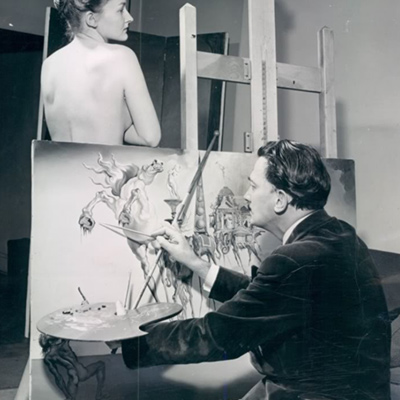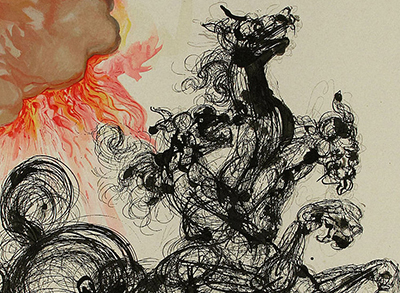
Salvador Dali
In the small agricultural town of Figueres, Spain, Salvador Dali was born on March 11, 1904. His birth came nine months after the death of his older brother, also named Salvador. When Dali was five years old, his parents explained that he was the reincarnation of his deceased brother, a sentiment Dali came to believe and one which eventually influenced much of his artistic work. Once his affluent parents built him his own studio, Dali's talent for drawing and painting only increased from there. But in 1921, Dali suffered incalculable trauma when his mother succumbed to breast cancer. Looking back on the loss, Dali remarked that his mother’s death "was the greatest blow I had experienced in my life. I worshipped her... I could not resign myself to the loss of a being on whom I counted to make invisible the unavoidable blemishes of my soul.” Again, this emotional strife came to influence and inspire much of Dali’s art throughout his life. Read More

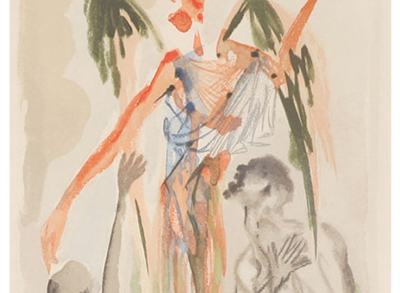
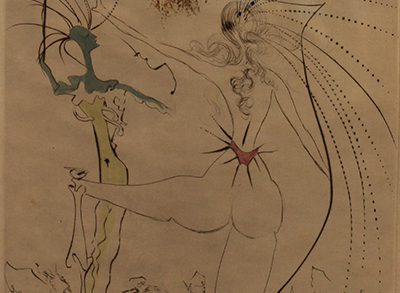
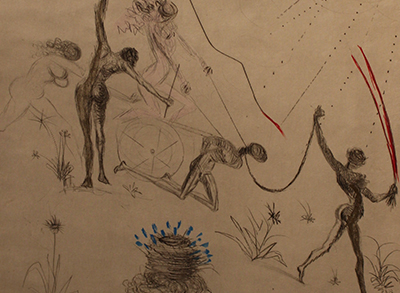
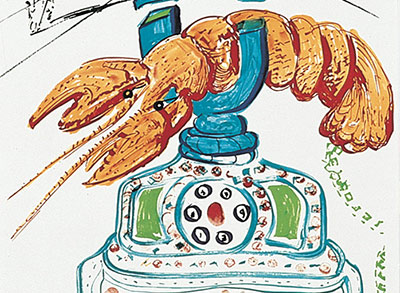
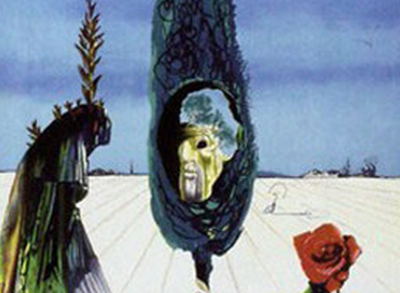
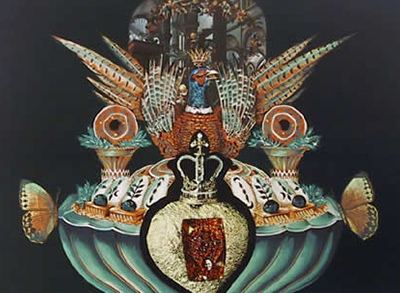


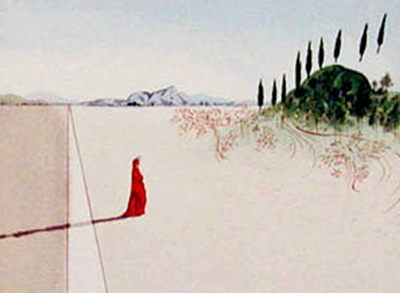
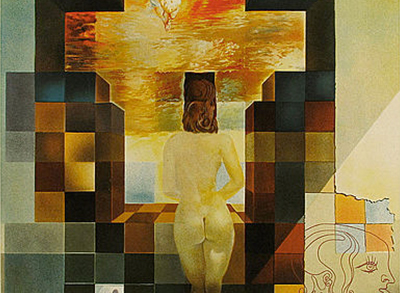
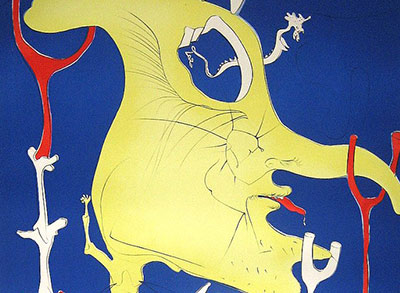
A year after his mother’s death, Dali attended the San Fernando Academy of Fine Arts in Madrid and had his first one-man show in Barcelona at the age of 21. In 1926, Dali hosted another one-man show in Paris, where he met for the first time other extraordinary artists of a similar creative bent, namely Andre Breton, Henri Matisse, Joan Miro, and Pablo Picasso. Dali revered Picasso, and over the next few years, the young Surrealist’s work reflected an obvious influence from Picasso and Miro. It was also at this time he officially joined the Surrealist movement, and it was not long before he became the “leader” of the movement himself. During this period he created some of his best known works, such as his famous "melting clocks” painting, The Persistence of Memory (1931).
In 1929, Dali met his muse, Elena Ivanovna Diakonova, or “Gala” as she was familiarly called, a Russian immigrant ten years his senior. At the time, she was married to the surrealist poet, Paul Eluard, but she eventually married Dali in 1934 after maintaining a close relationship with him for five years. Throughout the entirety of their relationship, Dali painted Gala in a sympathetic and adoring light, always citing her as his primary muse, despite his extraneous flings with other women. Don Salvador Dali i Cusi, the young Dali’s father, disapproved of the artist’s choice in a companion, and was highly critical of his involvement with the Surrealist group. After Dali debuted the drawing “Sacred Heart of Jesus Christ” with the inscription “Sometimes, I spit for fun on my mother’s portrait”, the elder Dali became furious, and in December of 1929, he violently expelled his son from his home in Cadeques, warning him never to return again.
As the second World War approached, Dali found himself at odds with the other Surrealists over his politics and his bizarre public antics. Unwilling to explicitly denounce fascism or the “Hitler phenomenon”, Dali instead defended the congruency between art and an apolitical society. In 1934, Andre Breton organized a “trial” that was held by the Surrealists, which formally expelled Dali entirely from the movement. If the artist was fazed, he did not show it, retorting “I myself am surrealism."
Escaping the war in Europe in 1940, Gala and Dali sailed for New York, where they would spend the next several years. Dali began to move away from his Surrealist inclinations and towards a noteworthy classical period in his art which was heavily influenced by science, geometry, history, and his newly found Catholic religion. He worked in new mediums such as furniture, costumes, film scripts, jewelry, and window displays for retailers. In 1942, Dali wrote an autobiography entitled The Secret Life of Salvador Dali, which was subsequently praised and criticized. Time magazine revered it as "a wild jungle of fantasy, posturing, belly laughs, narcissist and sadist confessions,” referring to the disturbing stories told of Dali's childhood and the blatantly ego-centric style of the book. The most notable criticism came in 1944 from author and essayist George Orwell, who famously remarked that “one ought to be able to hold in one's head simultaneously the two facts that Dalí is a good draughtsman and a disgusting human being.”
In 1948, Dali and Gala moved back to their coastal home in Spain, where he would spend the majority of the next three decades working. At this time in his career, Dali experimented with different styles and techniques, such as optical illusions, visual puns, holography, pointillism, and stereoscopic images. Later on, these works garnered the attention of the young Andy Warhol, who proclaimed Dali as an important influence on Pop Art.
Having begun work on it in 1960, Dali opened the Teatro-Museo Dali in Figueres, Spain in 1974, and at the end of the decade, he was honored with retrospectives in London and Paris. In the early 1980s, his health began to fail and when Gala died in 1982, Dali lost much of his will to live, and a year later, he debuted what would be his final painting, The Swallow’s Tail. His health continued to decline over the next six years until Dali died in 1989 of respiratory complications in Figueres at the age of 84.
As an artist, Dali is most well known for his eccentric Surrealist works, though he is also often remembered for his effortless ability to evolve his style of art. From his early Impressionistic works to his bold Surrealist paintings to his later Classical period, Dali had an extraordinary talent which transcended mediums as well. Dali leaves behind a legacy of paintings, drawings, lithographs, films, photographs, jewelry and performance pieces which have endured decades after his passing and remained prominent examples of fine art. Securing his place as perhaps the greatest Surrealist of all time, Sotheby’s sold Dali’s Portrait de Paul Eluard in 2011 for a staggering $22.4 million, the most ever paid for a Surrealist work of art.

